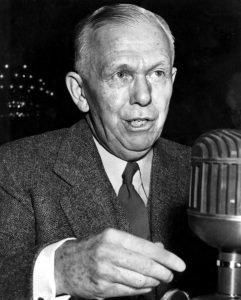 International Holocaust Remembrance Day on January 27th commemorates the victims of the Holocaust during World War II. It was designated by the United Nations General Assembly in 2005 during a special session that marked the 60th anniversary of the liberation of the Nazi concentration camp of Auschwitz-Birkenau by Soviet troops.
International Holocaust Remembrance Day on January 27th commemorates the victims of the Holocaust during World War II. It was designated by the United Nations General Assembly in 2005 during a special session that marked the 60th anniversary of the liberation of the Nazi concentration camp of Auschwitz-Birkenau by Soviet troops.
After liberation, displaced persons camps (DP camps) were set up as a temporary facility for refugees from Eastern Europe and survivors of the concentration camps and labor camps. The original plan, as per the agreement at the Yalta Conference, had been to repatriate them to their countries of origin as quickly as possible. Most of the 7,000,000 displaced persons had returned to their countries, but there were about 1 million people remaining who were unwilling to return. Congress had to decide the best way to solve the situation. Proposed solutions included: forced repatriation, indefinite separate maintenance in Germany in assembly centers, or resettlement in other countries, including the United States.
In July of 1947, Marshall testified before the subcommittee on Immigration and Naturalization regarding H.R. 2910, a bill to authorize the United States during an emergency period to undertake its fair share in the resettlement of displaced persons in Germany, Austria and Italy.
 Marshall began his statement his statement “as Chief of Staff during the war years I naturally followed the subject (displaced persons) very closely. I saw the first authentic and detailed reports on conditions in the concentration camps overrun by our armies. Some of you may recall that, at the request of General Eisenhower, I invited a group of representative congressional leaders to visit the concentration camps at that time. I commend their report to you as a historic document. There are about a million displaced persons in and around the camps. Most of them are people who were uprooted and forcibly transferred into Germany by the Nazi armies.”
Marshall began his statement his statement “as Chief of Staff during the war years I naturally followed the subject (displaced persons) very closely. I saw the first authentic and detailed reports on conditions in the concentration camps overrun by our armies. Some of you may recall that, at the request of General Eisenhower, I invited a group of representative congressional leaders to visit the concentration camps at that time. I commend their report to you as a historic document. There are about a million displaced persons in and around the camps. Most of them are people who were uprooted and forcibly transferred into Germany by the Nazi armies.”
Marshall continued, “it is against American tradition for us to compel these persons, who are now under our authority, to return against their will to those areas under governments whose political and economic systems they are unwilling to accept…why is it not better for these displaced persons to participate in and contribute to the reconstruction of Europe? To return these people from eastern European areas to those eastern areas for this purpose is not one we can urge…It would take force to do it and a surrender of our principles…If we practice what we preach, if we admit a substantial number of these people as immigrants, then we can actually bring an end to this tragic situation…You cannot assert leadership and then not exercise it.”
Between 1947 and 1953 the vast majority of displaced persons found new homes in Belgium, the United Kingdom, Canada, Australia, France, Venezuela, Brazil, Argentina, French Morocco, Norway and even Iraq. The United States was late to accept displaced persons, but took in 400,000 displaced persons between 1949 and 1952.
[iframe width=”560″ height=”315″ src=”https://www.youtube.com/embed/Z8V6h00eUsM” frameborder=”0″ allowfullscreen]
